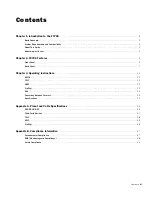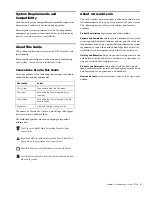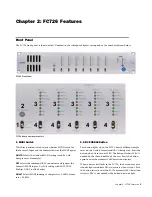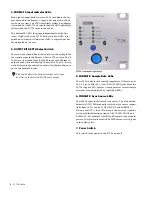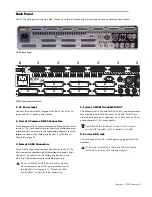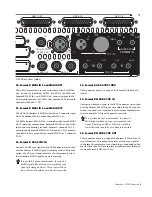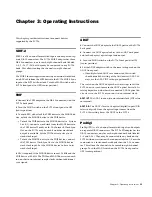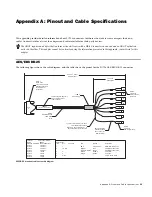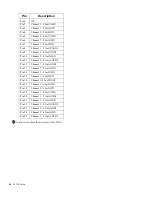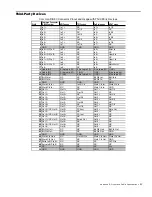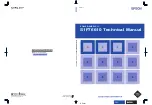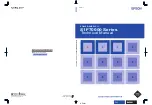
FC726 Guide
2
Basic Concepts
Channels and Banks
The FC726 can convert 56 digital audio channels in two direc-
tions simultaneously (
simultaneous bidirectional conversion
)
with any of the supported devices. The 56 channels are di-
vided into seven banks, each with eight channels. Each bank
may be connected to a different third-party device running at
a different sample rate (such as Tascam DA-88 on channels
1–8, ADAT on 9–16, and AES/EBU on 40–48).
Signal Flow
Since 56 channels can be converted bidirectionally, signal
routing can become confusing. These simple rules should help
clarify the signal flow:
• Audio arriving at the MADI B Input is sent out the
Format A Output.
• Audio arriving at the Format A connectors is sent out the
MADI B Output.
• The AES outputs always mirror the Format A Output.
Format A Inputs
Three connectors can be used by third-party inputs: the com-
mon DB-50 connectors, the MADI A Inputs, and the DB-25
AES connectors. The appropriate signal is chosen according to
the following rules:
• If the MADI switch is ON, the MADI input is used for all 56
channels.
• If the MADI switch is OFF, either the common DB-50 or AES
signals are used in eight-channel banks.
• If only one connector is in use, that format is selected.
• If both are connected, the common DB-50 signal takes
precedence.
Format A Adapters
To create a compact 2U device with maximum flexibility, the
FC726 uses a common DB-50 connector for all third-party for-
mats. An adapter is required to convert from the DB-50 con-
nector to the company’s own connector. The adapter is not
intended to be the connecting cable; it simply adapts the com-
mon DB-50 connector so it behaves like the back panel of the
third-party device. These adapters are available separately
from Avid. In most cases, another cable is required to connect
the adapter to the third-party device. See Appendix A, “Pinout
and Cable Specifications” for detailed information.
Sample Rate Conversion
Digital audio devices have previously been required to use the
same sample rate to operate correctly together. The FC726 re-
moves this limitation by allowing many sample rates simulta-
neously. For example, by using the common DB-50 connec-
tors, each eight-channel bank can operate at its own sample
rate. Furthermore, the FC726 detects different sample rates
and automatically activates Sample Rate Conversion (SRC).
Although the FC726 SRC is the highest quality available, some
users may still require an unaltered, bit-for-bit copy of the
data. In this case, connected devices can be slaved to the same
sample clock, which disables SRC automatically (you can also
disable SRC manually).
Summary of Contents for FC726
Page 1: ...FC726 Guide System 5...
Page 4: ...FC726 Guide iv...
Page 8: ...FC726 Guide 4...
Page 14: ...FC726 Guide 10...
Page 18: ...FC726 Guide 14...
Page 34: ...FC726 Guide 30...
Page 35: ......



